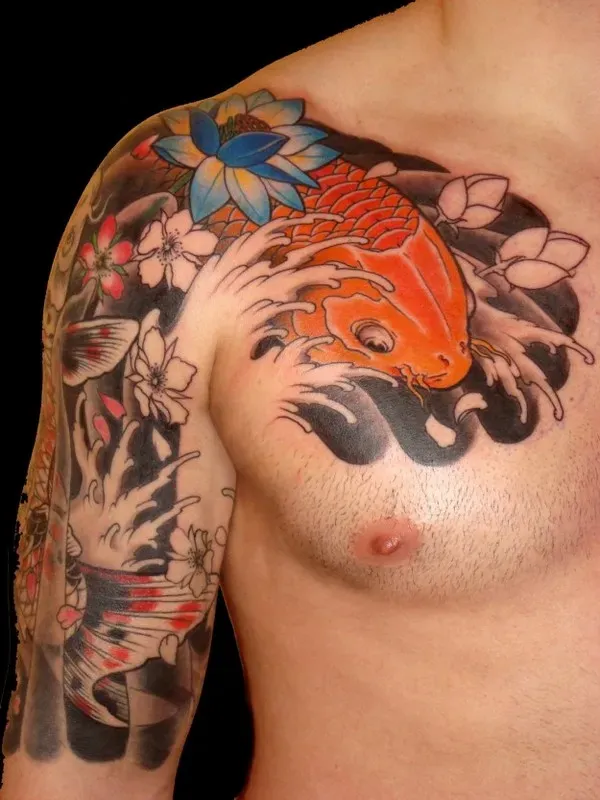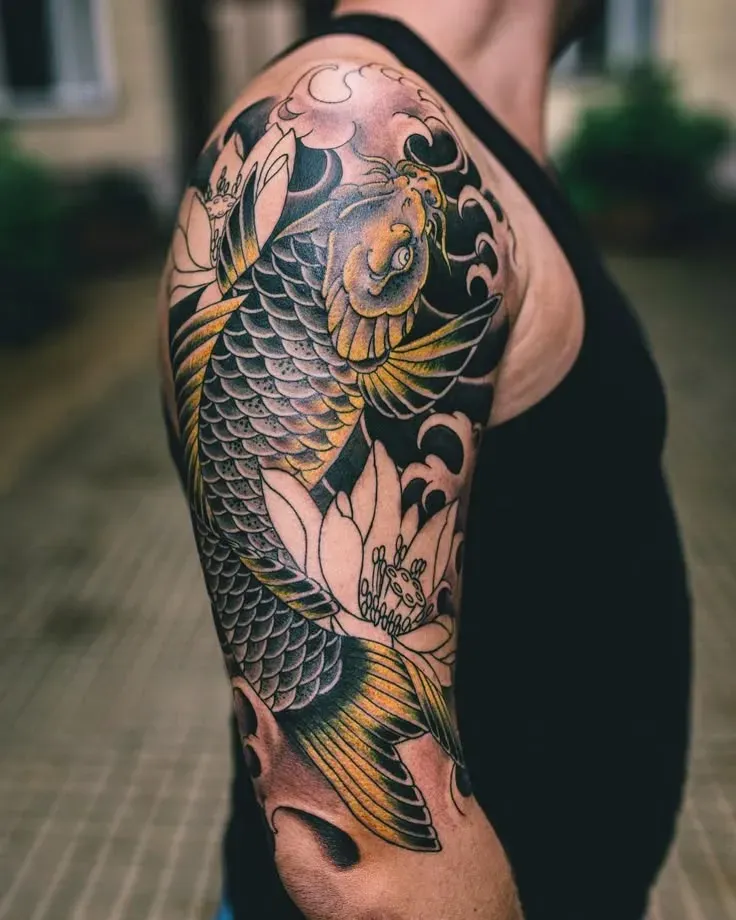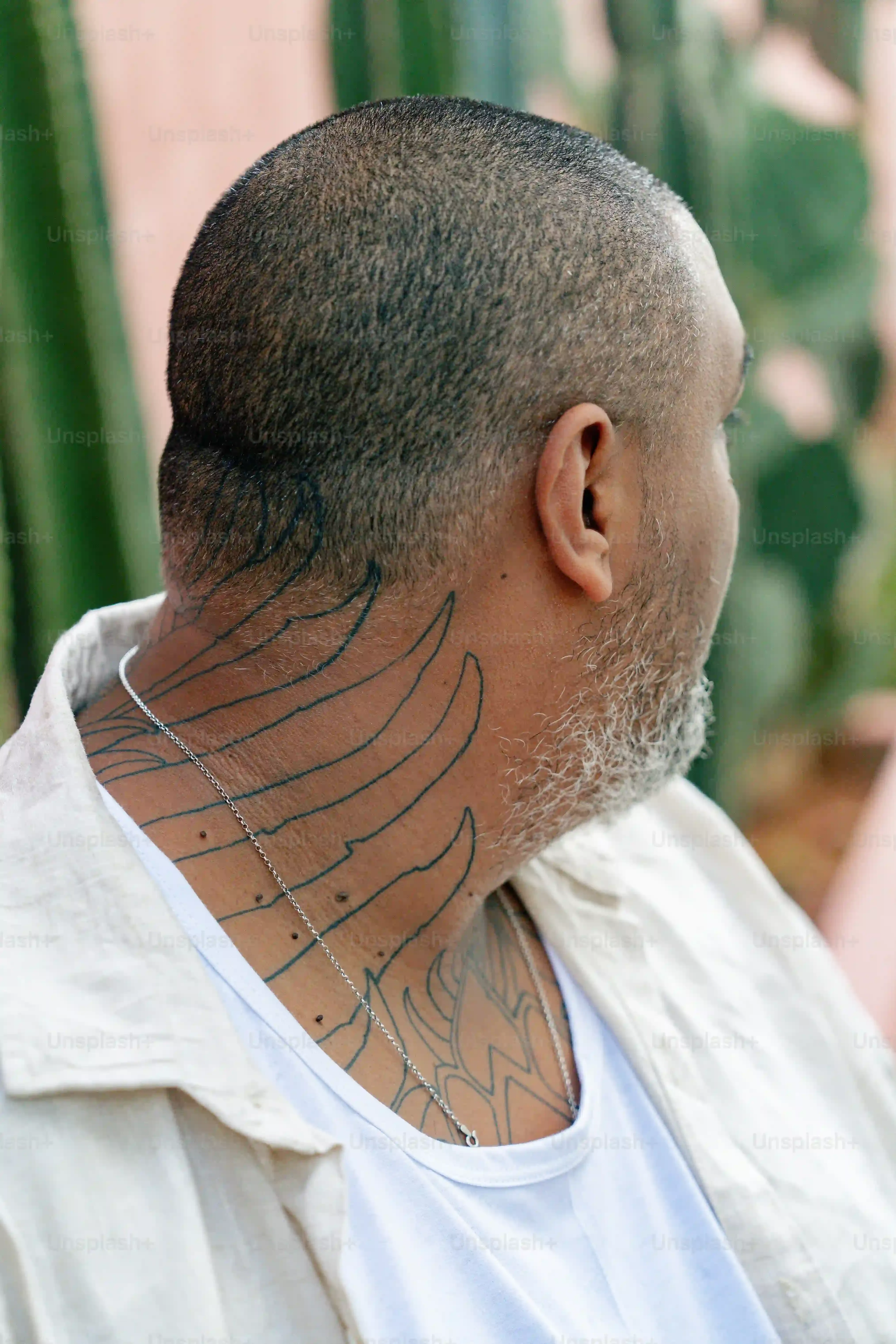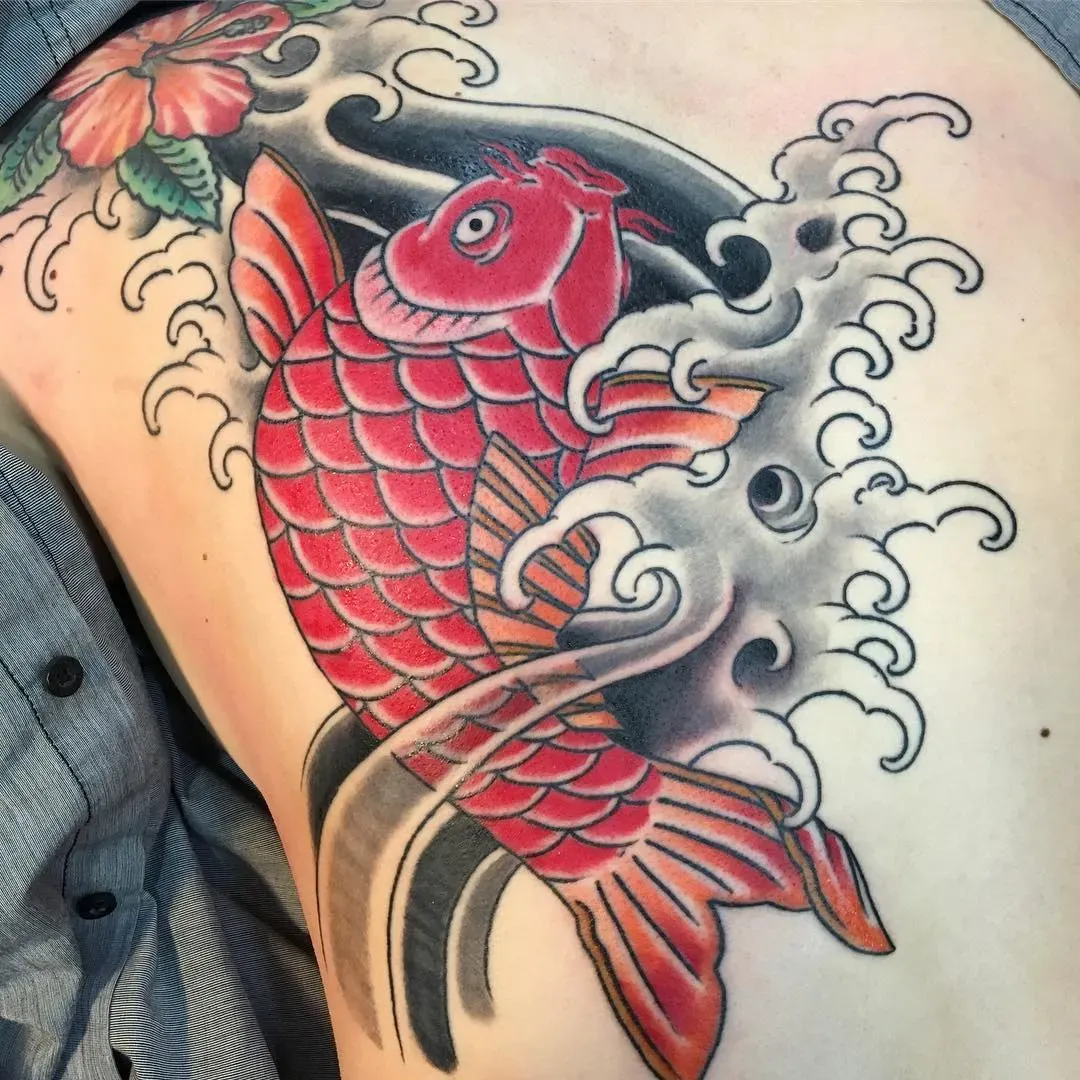Table of Contents
Thinking about getting inked? Maybe you've seen those vibrant koi fish swimming across someone's arm or back and thought, "That's cool." But there's a lot more swimming beneath the surface of most koi fish tattoo designs than just a pretty picture. These aren't just random scales and fins; they carry centuries of history, myth, and meaning, particularly in Japanese and Chinese cultures. People get koi tattoos for all sorts of reasons – sometimes it's about overcoming challenges, sometimes it's about luck, and sometimes it's just because they look incredible. Choosing the right koi fish tattoo design involves more than picking a color. You're deciding on a story, a direction, a style, and a significant piece of body art that will be with you for a long time. This article cuts through the noise to give you the real deal on what makes these designs tick. We'll dive into the deep symbolism, explore the different artistic approaches, talk about where these designs look best on the body, and cover the practical stuff you absolutely need to know before sitting down with a needle. Consider this your straightforward guide to navigating the world of koi fish tattoo designs, helping you understand the ink before it becomes a permanent part of you.
The Deep Meanings Behind Koi Fish Tattoo Designs
The Deep Meanings Behind Koi Fish Tattoo Designs
More Than Just a Fish: Symbolism Rooted Deep
Alright, so you're looking into koi fish tattoo designs, thinking about getting one. Cool. But let's get real for a second. These aren't just pretty pictures for your skin. The history goes back centuries, tied tightly to Chinese and Japanese legends. Think of the classic story: a determined koi swims upstream, battles currents, climbs waterfalls – specifically the Dragon Gate on the Yellow River – and if it makes it, bam, it transforms into a dragon. That's not just a cute fish tale. That journey? It’s a heavyweight symbol for perseverance, strength, and overcoming adversity. It’s about pushing through the tough stuff, handling whatever life throws at you, and coming out stronger, maybe even transformed, on the other side.
People often get these tattoos to mark a significant struggle they’ve faced or a huge goal they’ve achieved. It’s a permanent reminder that they didn't give up. It stands for ambition and progress. Imagine looking down at your arm and seeing that fish, knowing what it represents about your own grind. It’s less about being lucky and more about being resilient enough to make your own luck.
Color and Direction: The Nuances of Your Narrative
Now, the meaning gets a bit more specific depending on the details. The color of the koi matters. A red koi? That's often linked to love, energy, and motherhood. Black koi can symbolize overcoming obstacles or patriarchal strength. Gold or metallic koi? Those usually point towards wealth, prosperity, and success. White koi with red spots, known as Kohaku, often represent success in career or life. It's like picking the right words for a sentence – the color adds a specific shade to the overall story.
The direction the koi is swimming also tells a tale. An upstream koi clearly shows the struggle, the fight against the current, the journey towards that transformation. A downstream koi, on the other hand, can represent success achieved, goals met, or perhaps even accepting fate. It might also symbolize letting go of the struggle. So, when you’re looking at koi fish tattoo designs, consider not just the fish itself, but where it's headed and what color it wears. It changes the whole narrative.
So, which direction speaks to your current journey?
- Swimming Upstream: Represents struggle, perseverance, ambition, overcoming challenges.
- Swimming Downstream: Represents achieving goals, success, going with the flow, or accepting fate.
Exploring Popular Styles of Koi Fish Tattoo Designs
Exploring Popular Styles of Koi Fish Tattoo Designs
Ink Styles: Finding Your Koi's Vibe
so you know the meaning, but how do these koi fish tattoo designs actually look on skin? It's not a one-size-fits-all deal. Artists approach koi tattoos in a bunch of different ways, each giving the fish a totally unique feel. You've got the classic Japanese traditional style, often called Irezumi, which uses bold outlines, vibrant colors, and dramatic flow to make the koi look like it's truly swimming across the body, often surrounded by water, waves, or cherry blossoms. Then there's Neo-Traditional, which takes those classic elements but adds a modern twist with richer colors, more detailed shading, and sometimes slightly more stylized shapes. Some people go for a more realistic approach, where the artist focuses on making the koi look as lifelike as possible, capturing the texture of the scales and the glint in the eye with fine detail and smooth gradients. Each style tells the koi's story differently through line work, color palette, and overall composition.
Placement and Flow: Where Koi Fish Tattoo Designs Shine
Placement and Flow: Where Koi Fish Tattoo Designs Shine
Working With Your Body's Canvas
so you've got the meaning down, you're thinking about the style, but where does this thing actually go? Koi fish tattoo designs aren't just stuck anywhere; the best ones really play off the body's shape. Think about it: a long, flowing fish and its watery environment naturally lend themselves to areas with some length or curvature. The arm, especially a full sleeve, is a classic spot. The koi can swim up or down the arm, the waves wrapping around. Legs work great too, offering a similar canvas for a full piece that follows the muscle lines. The back? That's prime real estate. A large back piece can depict an entire scene, with the koi battling a waterfall or navigating turbulent waters, using the broad space to show movement and drama. Even the chest and ribs offer interesting possibilities, allowing the design to flow with the curve of the torso.
It's not just about finding a flat spot; it's about how the design interacts with your anatomy. A skilled artist will make the koi look like it's genuinely moving, using the natural contours of your body to enhance the illusion of swimming. The tail might wrap around a bicep, the head might point towards a shoulder blade, and the water elements will flow with your curves. It's less like putting a sticker on a wall and more like painting on a living, breathing sculpture. The goal is a dynamic piece that looks right when you're standing still, but comes alive when you move.
Popular Spots for Koi Flow:
- Full Sleeve (Arm): Great for showing the koi's full journey, wrapping around.
- Leg (Full or Half): Similar to the arm, allows for vertical flow and detail.
- Back: Ideal for large, complex scenes with multiple elements and dramatic movement.
- Chest/Ribs: Can work well for designs that follow the curve of the body.
Making the Water Work for You
The water isn't just filler in koi fish tattoo designs; it's a critical part of the composition and flow. Those waves, ripples, and splashes aren't random. Artists use them to guide the eye, create a sense of motion, and connect different elements of the tattoo. On an arm sleeve, the water can swirl upwards, emphasizing the koi's struggle against the current. On a back piece, powerful waves can crash around the fish, highlighting the intensity of its journey. The direction and intensity of the water elements directly support the narrative of the koi itself, whether it's a calm drift or a violent fight.
Thinking about how the water will wrap around your limb or spread across your back is key. It needs to look natural on your body. A choppy, aggressive water pattern might look amazing on a strong, muscular back, while softer, flowing waves might suit a piece on a forearm. The artist needs to consider how the skin stretches and moves, ensuring the design doesn't distort awkwardly. It's a collaboration between the artist's vision, the design's inherent movement, and your body's unique landscape. Getting this right is what separates a good koi tattoo from a truly exceptional one.
What to Consider Before Getting Your Koi Fish Tattoo Design
What to Consider Before Getting Your Koi Fish Tattoo Design
Finding the Right Artist for Your Koi Vision
So you're sold on the idea of koi fish tattoo designs, you know the meaning, you've thought about the style and placement. Great. Now for the crucial part: who's actually going to put this on your body? This isn't the time to go bargain hunting or hit up the first place with a vacancy. Koi tattoos, especially the traditional Japanese styles, require serious skill. We're talking about artists who understand flow, saturation, and how to make that fish look like it's slicing through water, not just stuck on your skin. Look for portfolios heavy with large-scale Asian-inspired work. Check their lines, their color packing, and how their healed tattoos look. Don't be shy about asking questions. A good artist will want to discuss the symbolism with you and suggest placement that works with your body, not against it. They're not just tracing a stencil; they're interpreting a powerful image for your specific form.
Getting a koi tattoo is an investment – in the art, in the meaning, and in your skin. Cheap work often looks cheap and fades badly. Find someone whose style resonates with you and whose technical skill is undeniable. It's worth waiting for the right artist and paying for their expertise. Think of it this way: you wouldn't ask a short-order cook to bake your wedding cake, right? Same principle applies here. Find a specialist.
Budgeting and Time Commitment: The Real Costs
Let's talk brass tacks. Koi fish tattoo designs, especially larger, detailed pieces, aren't exactly impulse buys. They require significant time in the chair and, consequently, significant money. Full sleeves or back pieces can take multiple sessions, sometimes spread out over weeks or months, racking up hours and costs. Get a clear estimate from your artist upfront. Understand their hourly rate or project price. Factor in potential touch-ups down the line.
Beyond the cash, consider the time. Sessions can last several hours. Healing takes time and requires specific care. You might need to adjust work or activity schedules depending on the size and placement of the tattoo. This isn't like getting a tiny heart on your ankle. A large koi piece is a commitment, both financially and in terms of your personal time and recovery. Make sure you're prepared for both before you start.
Things to Budget For:
- Artist's Hourly Rate or Project Price
- Tip for the Artist (Standard is 15-20%)
- Aftercare Products (Special soaps, lotions)
- Potential Touch-Up Sessions
Healing and Aftercare: Protecting Your Investment
the ink is in, you've got your awesome koi fish tattoo design. Now the real work begins – keeping it looking good. Proper healing and long-term aftercare are non-negotiable if you want your tattoo to stay vibrant and sharp. Your artist will give you specific instructions, and you need to follow them religiously. This usually involves keeping it clean with mild soap, applying a recommended ointment or lotion, and keeping it out of direct sunlight. No soaking in baths or pools while it's healing. No picking at scabs – seriously, don't do it, you'll pull color out and risk infection.
Even after it's healed, sun protection is key. UV rays are the enemy of tattoo ink, fading colors and blurring lines over time. Use a high SPF sunscreen on your tattoo whenever it's exposed. Moisturizing regularly helps keep the skin healthy and the colors looking fresh. Think of it as protecting a piece of art – because that's exactly what it is. Neglect it, and that beautiful koi will look like a sad goldfish in a few years. Put in the effort, and it will continue to tell your story vividly.
Beyond the Ink: Caring for Your Koi Fish Tattoo
Beyond the Ink: Caring for Your Koi Fish Tattoo
Alright, you've gone through the planning, the pain, and the initial healing. That incredible koi fish tattoo design is now a part of you, and frankly, it looks amazing. But the journey doesn't end when the scabs fall off. Think of this phase as protecting your investment. Long-term care is crucial if you don't want that vibrant koi to turn into a faded, blurry mess a few years down the line. The biggest enemy? The sun. UV rays break down tattoo ink faster than you can say "regret." Get yourself a good, high-SPF sunscreen – think 30 or higher – and make applying it part of your routine whenever your tattoo is exposed. Moisturizing helps too; healthy, hydrated skin keeps the ink looking sharper. It's not glamorous, but neither is a faded tattoo you paid good money for. Treat your koi like the artwork it is, and it'll keep telling your story for years to come.
More Than Just a Fish Story
So, there you have it. Koi fish tattoo designs are clearly more than just pretty scales and flowing water. They're loaded with symbolism, steeped in legend, and come in enough styles to make your head spin. Getting one isn't like picking a t-shirt; it's choosing a narrative etched into your skin. Whether it's the uphill battle of the waterfall legend, the balance of yin and yang, or just the sheer visual appeal, understand what you're signing up for. Do your homework on the design, the placement, and especially the artist. This ink is permanent, so make sure the story it tells is the one you actually want to carry.